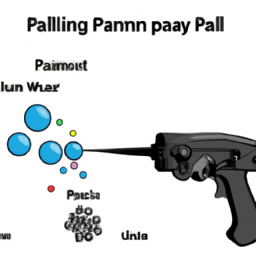A Paintball Gun How It Works
Table of Contents []
How A Paintball Gun Works
Introduction
Paintball guns are growing increasingly popular as a leisure activity and provide hours of family-friendly fun. Whether used recreationally or in action-packed tournaments, paintball gunsor markersare essential gear for anybody getting into the game. In this article we'll cover the anatomy of a paintball gun, its key components, and the inner workings of its operation.
Paintball Gun Anatomy and Components
Let's start with the outer anatomy of a paintball gun. This will acquaint you with its shapes and components. Paintball guns have either a vertical or inline feed tube which houses the paintballs that will be propelled by the gun. There also may be a sight rail or other mounting accessories available, depending on the model of gun.
The Inside Parts
Now let's look inside the gun. Viewed from the top, we have the hopper compartment, which is attached to the feed tube where ammunition is loaded. The hopper is connected to the paintball gun's chamber which acts as a mini-barrel, and is connected to the main barrel of the gun. At the back of the chamber is the bolt assembly. When the trigger is pulled, it triggers the bolt assembly to move forward in order to fire the paintball.
Compressed Gas
Paintball guns require compressed gas for its operation. Depending on the gun, compressed air or Co2 gas may be used. The gas is connected to the gun's air tank which is usually located at its base. It then propels through a regulator which helps to maintain pressure within the chamber, and is connected to the gun's ASA, which is the adapter used to attach the compressed gas to the gun.
Safety Mechanism
Paintball guns come with an additional safety mechanism for your own protection. The trigger is connected to a three-way switch, which allows users to select single-shot mode, multiple-shot mode, or safety (non-fire) mode.
Solenoid Valves
And finally, solenoid valves are the key components that help the gun to fire paintballs. When the trigger is squeezed, it activates the solenoid valve, releasing the pressurized air that propels the paintballs through the paintball gun.
In Summary
This article has provided readers with an overview of how a paintball gun works. Paintball guns consist of an outer anatomy and internal components such as a hopper, chamber, barrel, safety mechanism, and solenoid valves that allow the gun to fire paintballs. Additionally, in order for the paintball gun to operate, compressed gas is attached to the gun's air tank and regulated through a regulator. Paintball guns are a great way to have fun and should always be handled with respect and the necessary safety measures in mind.

Previous Page
Next Page